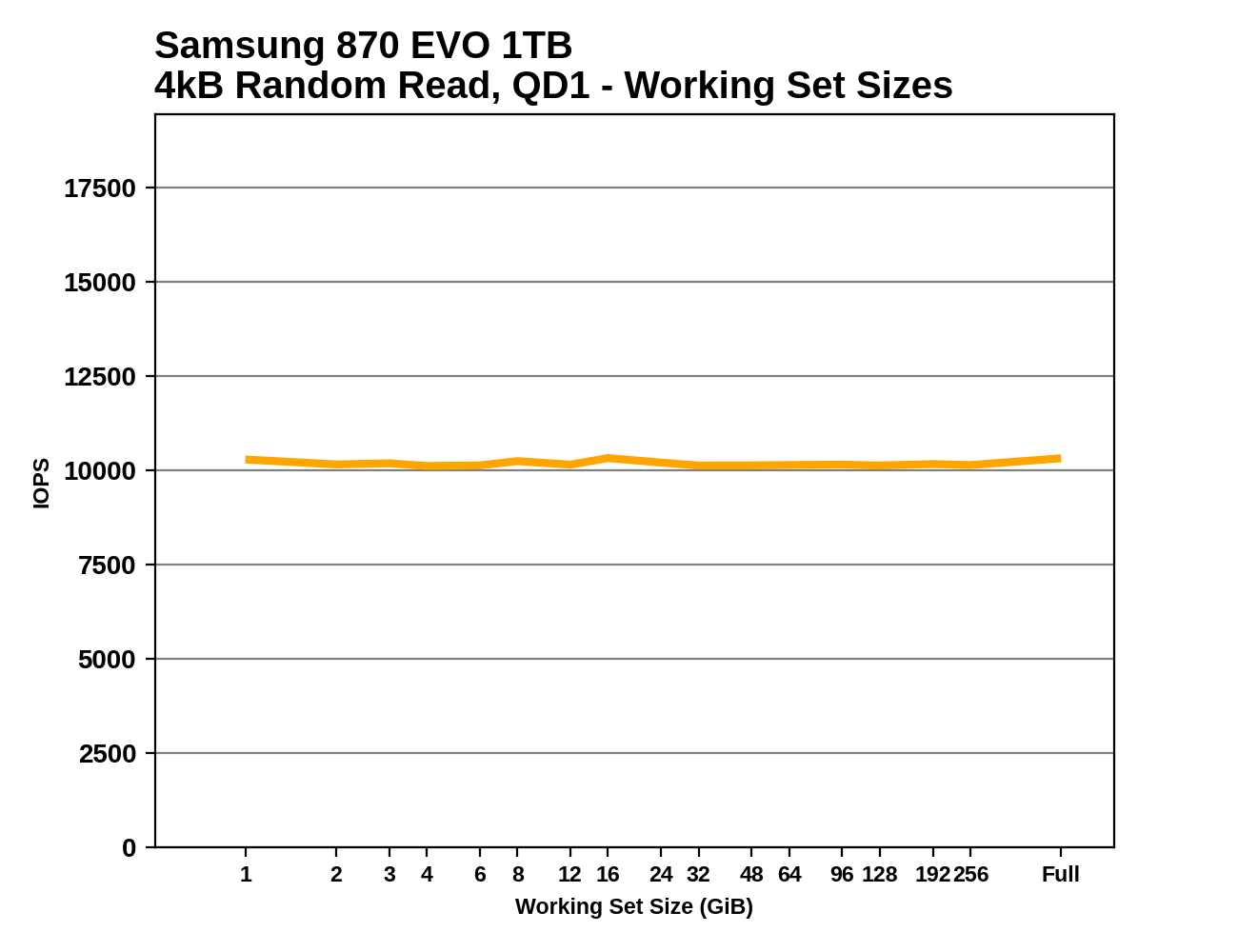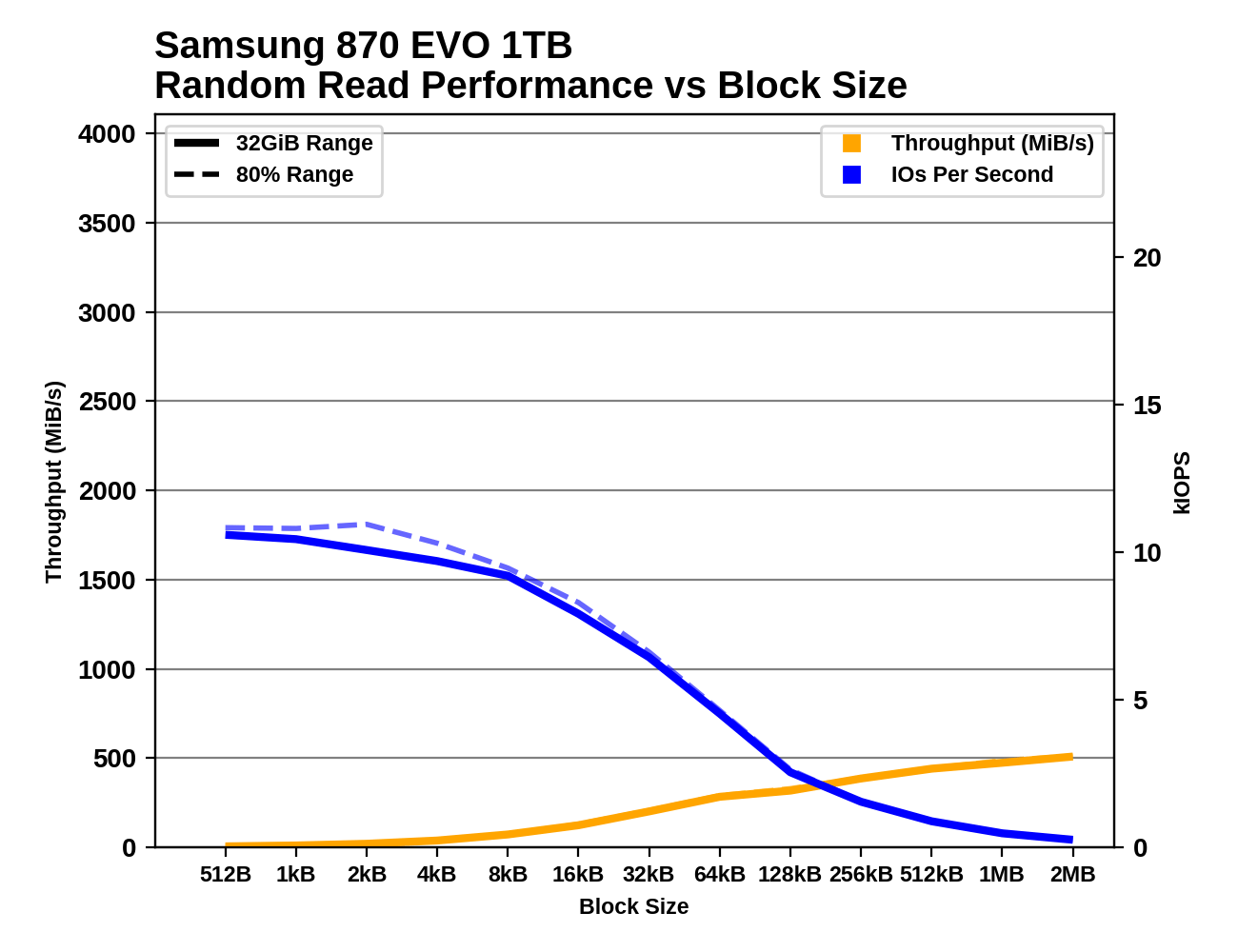The Samsung 870 EVO (1TB & 4TB) Review: Does the World Need Premium SATA SSDs?
by Billy Tallis on February 17, 2021 8:00 AM ESTAdvanced Synthetic Tests
Our benchmark suite includes a variety of tests that are less about replicating any real-world IO patterns, and more about exposing the inner workings of a drive with narrowly-focused tests. Many of these tests will show exaggerated differences between drives, and for the most part that should not be taken as a sign that one drive will be drastically faster for real-world usage. These tests are about satisfying curiosity, and are not good measures of overall drive performance. For more details, please see the overview of our 2021 Consumer SSD Benchmark Suite.
Whole-Drive Sequential Fill
 |
|||||||||
| Pass 1 | |||||||||
| Pass 2 | |||||||||
Some of our other tests have shown a few signs that the 870 EVO's write performance can drop when the SLC cache runs out, but this straightforward sequential write pass over the entire drive doesn't reveal any such behavior. The 870 EVO's sequential write performance is extremely consistent, even on the second write pass.
 |
|||||||||
| Average Throughput for last 16 GB | Overall Average Throughput | ||||||||
Due to the excellent performance consistency, the Samsung 870 EVOs edge out the other SATA drives with marginally higher average sequential write speeds. The entry-level NVMe drives end up much worse off than the mainstream SATA drives once their caches run out, but the more mainstream NVMe drive blows them all away.
Working Set Size
 |
|||||||||
As expected, the Samsung 870 EVO's random read performance shows basically no variation across a range of working set sizes, and that read performance is at least a little bit faster than any of the other SATA drives or the entry-level NVMe drives.
Performance vs Block Sizes
 |
|||||||||
| Random Read | |||||||||
| Random Write | |||||||||
| Sequential Read | |||||||||
| Sequential Write | |||||||||
There are no particular surprises in how the Samsung 870 EVO handles IOs of different block sizes. Unlike some drives, it has no trouble with sub-4kB IOs. It offers moderate improvements over the 860 EVO for mid-sized random reads (up to about 128kB). The one negative is that for writes we again see more inconsistency from the 870 EVO than the 860 EVO when testing an 80% full drive. The simple whole-drive sequential write test may not have been able to reveal any SLC caching troubles, but it does seem clear that the caching behavior has some performance regressions for more complicated workloads on a drive that's more well-used—though it's still unlikely to matter for any typical real-world consumer workload.










136 Comments
View All Comments
yifu - Thursday, October 27, 2022 - link
Hi anandtech , what is the s2fps05a01 chip. Is it a voltage sensor circuit, or power management ic. I don’t see this kind of chip on other ssds. Seems micron crucial has a chip like that. M.2 especially i can see no other seems to have a extra chip like that. Is it has anything to do with reduce Risk power outages?Ryan Smith - Friday, October 28, 2022 - link
Per a quick check, that would appear to be a PMIC.These aren't typically needed for SSDs. But I don't know quite enough that I'm comfortable in speculating why it's there.